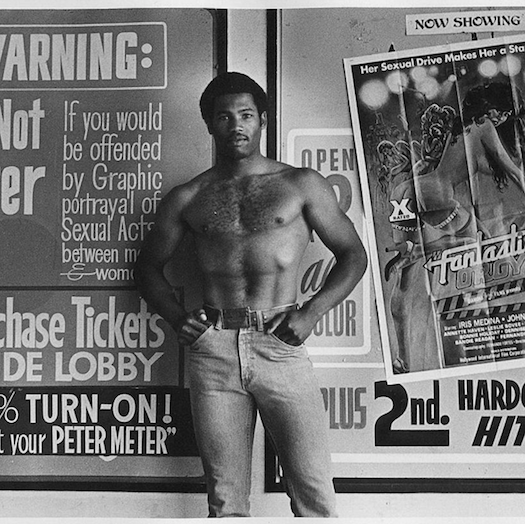 |
| Crawford Barton, “Untitled (Shirtless portrait)” (c. 1970s) |
Kimberly Drew, social media maven and founder of Black Contemporary Art and @museummammy, curates a selection of Visual AIDS Artist+ Member artworks, titled Sorrow’s Swing: Learning the Choreography of AIDS. It explores how choreography embeds itself in the practice of photography and how photographs of the AIDS crisis translate into a language of collective mourning.
View the images in Drew’s Sorrow’s Swing: Learning the Choreography of AIDS, and read her gallery text below. Kimberly was one of nine collaborating curators for Visual AIDS’s 26th annual Day With(out) Art, Radiant Presence.
Presented at New York University’s Black Portraitures Conference, Professor Jasmine E. Johnson’s paper, Sorrow’s Swing, asks: “for who does dying fail?” Her multimedia essay, featuring Flying Lotus’s “Never Catch Me” (2014) proposes that black dance bonds the dead to the living. In the video, the spirits of young black children arise from their caskets, dance (eccentricly), and then joyfully process towards the unknown. While elders mourn sorrowfully, the dead embody joy, vibrancy, and freedom. With this in mind, I’ve continued to ponder the seeming failure of death and the continuity of life through choreography, real or imagined.
While selecting images for Radiant Presence, I felt it urgent to consider how choreography is embodied in the photograph. Since the turn of the century, photography has been used as a way of communicating places, compositions, and moments that have transpired in the past. Photographs exist posthumous of these moments. More specifically, with respect to the AIDS epidemic, photography has been a vehicle for documenting the past, present and future of the disease.
My primary understanding of HIV/AIDS has been through photographs and other medium recorded by art history. Much like the “swing for sorrow” coined by Johnson, the reticent choreography of photography by/of those with AIDS shaped so much of my knowledge. In this selection of images, I’ve chosen works that despite their stillness embody movement and illustrate a folk narrative from the perspective of positive artists.







Comments
Comments